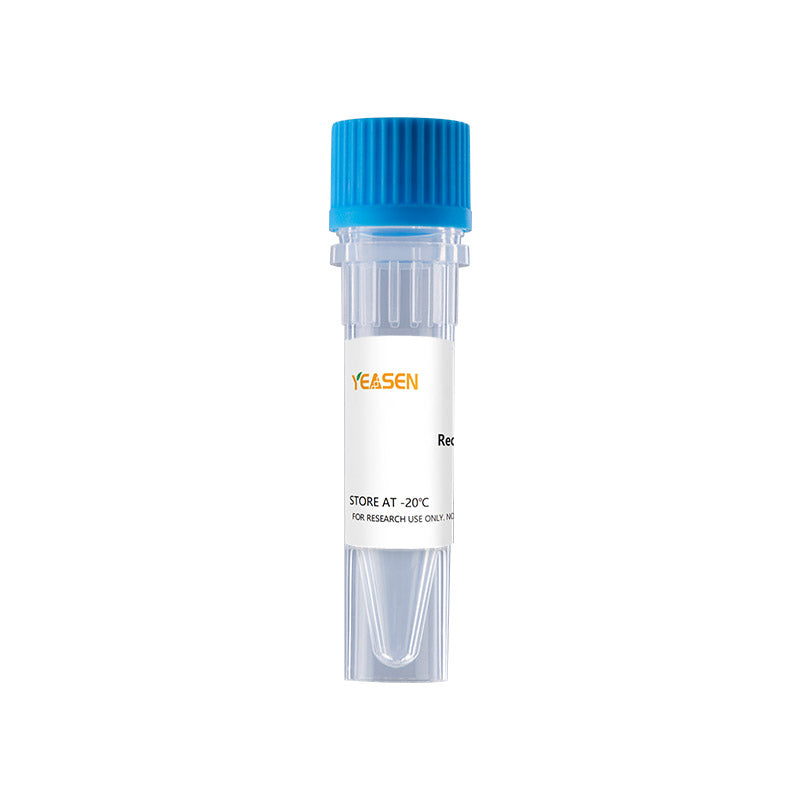Description
Interleukin-5 (IL-5) is a secreted glycoprotein that belongs to the alpha -helical group of cytokines. Unlike other family members, it is present as a covalently linked antiparallel dimer. The cDNA for rat IL-5 encodes a signal peptide and a 113 amino acid (aa) secreted mature protein. Mature rat IL-5 shares 70%, 94%, 56%, 63%, 59% and 59%, aa sequence identity with human, mouse, canine, equine, feline and porcine IL-5, respectively. IL-5 is primarily produced by CD4+ Th2 cells, but also by activated eosinophils, mast cells, EBV-transformed B cells, Reed-Sternberg cells in Hodgkin’s disease, and IL-2-stimulated invariant natural killer T cells (iNKT). IL-5 increases production and mobilization of eosinophils and CD34+ progenitors from the bone marrow and causes maturation of eosinophil precursors outside the bone marrow. The receptor for human IL-5, mainly expressed by eosinophils, but also found on basophils and mast cells, consists of a unique ligand-binding subunit (IL-5 R alpha) and a shared signal‑transducing subunit, beta c. IL-5 R alpha first binds IL-5 at low affinity, then associates with preformed beta c dimers, forming a high-affinity receptor. IL-5 also binds proteoglycans, potentially enhancing its activity. Soluble forms of IL-5 R alpha antagonize IL-5 and can be found in vivo. In humans, IL-5 primarily affects cells of the eosinophilic lineage, and promotes their differentiation, maturation, activation, migration and survival, while in mice IL-5 also enhances Ig class switching and release from B1 cells. IL-5 also promotes differentiation of basophils and primes them for histamine and leukotriene release.
Product Properties
|
Synonyms |
B-cell Differentiation Factor I, Eosinophil Differentiation Factor, TRF |
|
Accession |
Q08125 |
|
GeneID |
Rn.44227. |
|
Source |
E.coli-derived Rat IL-5, Met20-Val132, with an N-terminal Met. |
|
Molecular Weight |
Approximately 26.2 kDa. |
|
AA Sequence |
MEIPMSTVVK ETLIQLSTHR ALLTSNETMR LPVPTHKNHQ LCIGEIFQGL DILKNQTVRG GTVEILFQNL SLIKKYIDGQ KEKCGEERRK TRHFLDYLQE FLGVMSTEWA MEV |
|
Tag |
None |
|
Physical Appearance |
Sterile Filtered White lyophilized (freeze-dried) powder. |
|
Purity |
> 98% by SDS-PAGE and HPLC analyses. |
|
Biological Activity |
The ED50 as determined by a cell proliferation assay using human TF-1 cells is less than 0.5 ng/mL, corresponding to a specific activity of > 2.0 × 106 IU/mg. Fully biologically active when compared to standard. |
|
Endotoxin |
< 1.0 EU per 1μg of the protein by the LAL method. |
|
Formulation |
Lyophilized from a 0.2 µm filtered concentrated solution in PBS, pH 7.4. |
|
Reconstitution |
We recommend that this vial be briefly centrifuged prior to opening to bring the contents to the bottom. Reconstitute in sterile distilled water or aqueous buffer containing 0.1% BSA to a concentration of 0.1-1.0 mg/mL. Stock solutions should be apportioned into working aliquots and stored at ≤ -20°C. Further dilutions should be made in appropriate buffered solutions. |
Shipping and Storage
The products are shipped with ice pack and can be stored at -20℃ to -80℃ for 1 year.
Recommend to aliquot the protein into smaller quantities when first used and avoid repeated freeze-thaw cycles.
Cautions
1. Avoid repeated freeze-thaw cycles.
2. For your safety and health, please wear lab coats and disposable gloves for operation.
3. For research use only!
Payment & Security
Your payment information is processed securely. We do not store credit card details nor have access to your credit card information.
Inquiry
You may also like
FAQ
The product is for research purposes only and is not intended for therapeutic or diagnostic use in humans or animals. Products and content are protected by patents, trademarks, and copyrights owned by Yeasen Biotechnology. Trademark symbols indicate the country of origin, not necessarily registration in all regions.
Certain applications may require additional third-party intellectual property rights.
Yeasen is dedicated to ethical science, believing our research should address critical questions while ensuring safety and ethical standards.

